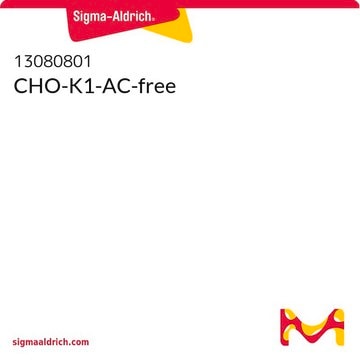CHOK1
CHOZN® CHO K1 Host Cell Line
Suspension-adapted in CD media
About This Item
Polecane produkty
opis
CHOK1 cell line derived from ECACC CHO K1
Poziom jakości
Warunki transportu
dry ice
temp. przechowywania
−196°C
Powiązane kategorie
Opis ogólny
Pochodzenie linii komórkowej
Postać fizyczna
Informacje prawne
Kod klasy składowania
10 - Combustible liquids
Klasa zagrożenia wodnego (WGK)
WGK 3
Temperatura zapłonu (°F)
Not applicable
Temperatura zapłonu (°C)
Not applicable
Certyfikaty analizy (CoA)
Poszukaj Certyfikaty analizy (CoA), wpisując numer partii/serii produktów. Numery serii i partii można znaleźć na etykiecie produktu po słowach „seria” lub „partia”.
Masz już ten produkt?
Dokumenty związane z niedawno zakupionymi produktami zostały zamieszczone w Bibliotece dokumentów.
Produkty
Understand how considerations such as DMSO concentrations and freezing techniques are key in the successful implementation of high cell density cryopreservation (HCDC).
Zrozumienie, w jaki sposób względy takie jak stężenie DMSO i techniki zamrażania są kluczowe dla pomyślnego wdrożenia kriokonserwacji o wysokiej gęstości komórek (HCDC).
Cellvento® and EX-CELL® CHO cell culture media and feeds, optimized for monoclonal antibody & recombinant protein production in fed-batch & perfusion
Powiązane treści
Learn more about cell line development and the relevant products you need for this process.
Dowiedz się więcej o rozwoju linii komórkowych i odpowiednich produktach potrzebnych do tego procesu.
This page describes the use of a small-scale perfusion bioreactor with integrated microfluidic flow control and sensor technologies to predict large-scale processes.
Nasz zespół naukowców ma doświadczenie we wszystkich obszarach badań, w tym w naukach przyrodniczych, materiałoznawstwie, syntezie chemicznej, chromatografii, analityce i wielu innych dziedzinach.
Skontaktuj się z zespołem ds. pomocy technicznej



